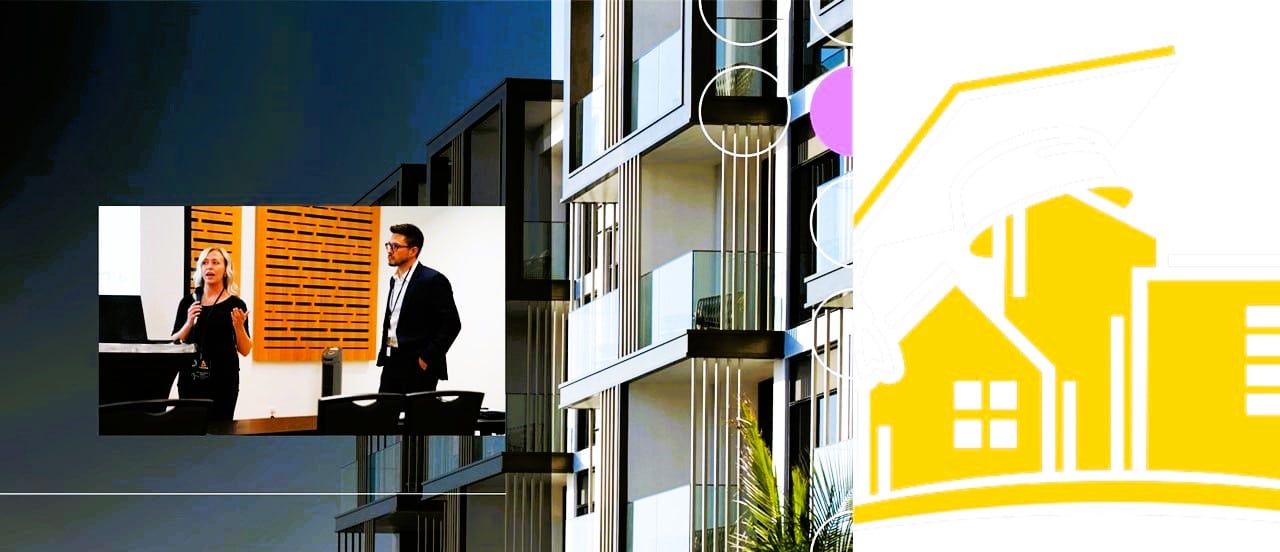
Projects that utilize modular practices can be completed 25-50% faster than traditional construction, according to experts from NRB.
The Modular Industry is Raising the Bar on Sustainability in University Environments
August 3, 2023
With the ability to build modules all year in massive warehouses and significantly reduce environmental impact, executives from NRB Modular Solutions, a division of Dexterra Group, raised interest from this SHURE audience of university executives and private student accommodation developers. While modular may cost more than conventional construction, it can be delivered in a shorter time, with less environmental impact, and with higher quality in design and building materials.
The permanent modular construction industry topped 12 billion dollars in 2022, just in North America alone, with the global market expected to reach over 150 billion by the end of this year, according to statistics from NRB.
“All of the materials are readily available in the warehouses, and all of the modular modules are built in a quality, climate-controlled factory,” according to Mark Wilson, National Pre-Construction Manager of NRB Modular Solutions. In addition, Wison notes that modular construction warehouses minimize traditional site construction costs while reducing environmental waste and CO2 emissions.
NRB Modular is a part of Dextera Group and has been actively growing in the post-secondary arena. Its primary focus is Modular Permanent Structures in student and indigenous housing in northern communities. NRB has additional divisions focusing on hospitality, forestry, and workforce accommodation. NRB maintains four manufacturing plants with 300,000 square feet of manufacturing capacity and employs approximately 700 in Canada.
According to Stephanie Duquette, Business Development Manager - Atlantic Canada, Dexterra Group, NRB can produce over 800 wood-frame modules per year out of its western plant and 650 modules from its Calgary plant. NRB has a third plant in Ontario that produces approximately 400 modules per year, primarily affordable. NRB has completed over 40 different projects with BC Housing. Duquette noted that NRB can make steel frames in addition to wood.
“Modular fabricated buildings can achieve the same code requirements as conventional wood frame construction,” Duquette told the SHURE audience. “It’s helpful to think of modular as more of a construction process than a building type.”
Duquette said NRB is uniquely positioned as a solution provider to Canada's housing crisis. And while the concept is relatively new to Canada, it has been around in Europe much longer. “Modular is working well over there in Europe.” According to Duquette, modular builds can be 15% faster, with endless arrays of design considerations.
NRB adheres to CSA 277 standards, which provide a framework for factory-constructed buildings. In addition, NRB makes worker safety a priority and is currently going through ISO 45001 certification for manufacturing.
According to Duquette and Wilson, the most significant savings in modular is because workers can break ground on civil work and foundations and build modules simultaneously in their warehouses. The time it takes for workers to construct the modules in the warehouse is about equal to the time required for civil work and foundations.
“Let’s just say two and a half to three months,” said Wilson. “So, while you’re doing all your site work, you are building the building that’s going to go on top of it because the modules get craned into place, so you’re looking at about six to ten modules, depending on the building per day.”
Another benefit to modular, according to Wilson, is ample supply in modular warehouses. “We have lots of storage space; if we don’t use the inventory on one project, it is just staying there and will be used for the next project.”
Wilson emphasized that modular truly saves time vs. traditional build. “You’re saving so much time on people running around grabbing stuff, delays or stoppages,” said Wilson. “So we keep building as long as the material’s already been procured.”
In addition, NRB notes that building the modules off-site in warehouses means less site disturbance, noise pollution, truck and equipment traffic, and improved recycling practices. In a drill-down on modular requirements, Wilson told the audience about two elements essential to modular. “You can see that the junction walls are aligned, so you have two wall assemblies there, which you need to align on every floor just to have all your plumbing and electrical be able to run up and down vertically.”
According to Duquette, campuses are continuing to grow, student populations are growing, and expectations for design, codes, and efficiencies are also growing. NRB is currently building a modular solution next to existing student housing. The NRB housing product will be a four-story, 148 beds complex. “I think that the main point is that we’re from the modular construction industry; we’re an option,” according to Duquette.
Despite its innovation and appeal to developers and university housing executives, the cost of modular may only sometimes be the most cost-effective option. “We can have those conversations [about costs] one on one, but maybe it works if you want that shortened construction timeline and to create that faster ROI,” Duquette told the SHURE audience.
NRB’s product is designed to last, according to Duquette. “We want this to last for decades, just as much as you do.”
Finally, Duquette notes that NRB actively engages in university partnerships and co-op student programs. “I have worked at universities before, I’ve worked in student government, so this is a bit of a passion sector that I love to be involved in,” Duquette told the audience.
 Continue reading with your SHURE membership account.
Continue reading with your SHURE membership account.
This full-length story, industry research, and data analytics are available exclusively to SHURE members.
- Unlimited access to SHURE.international
- Unlimited access to SHURE analytics covering university real estate and student accommodation trends
- Member-only newsletters and industry announcements
